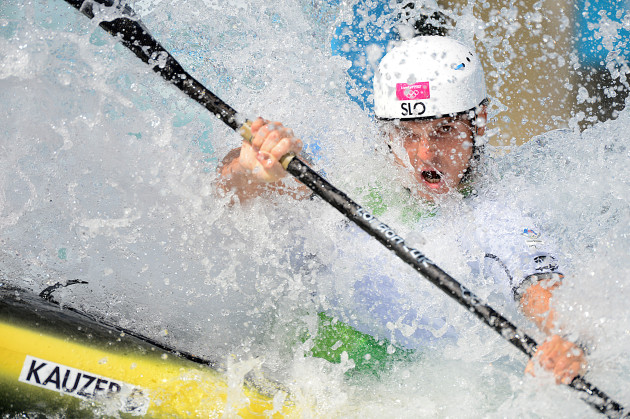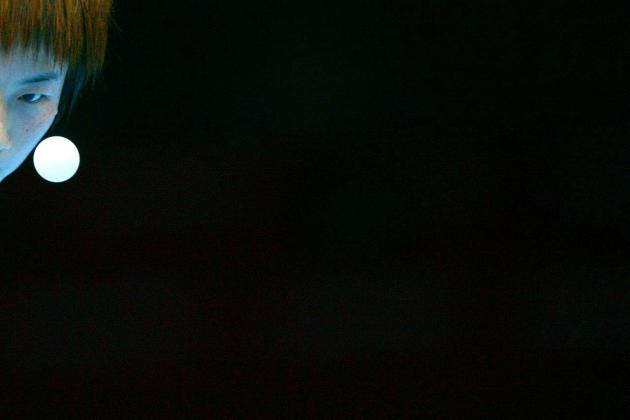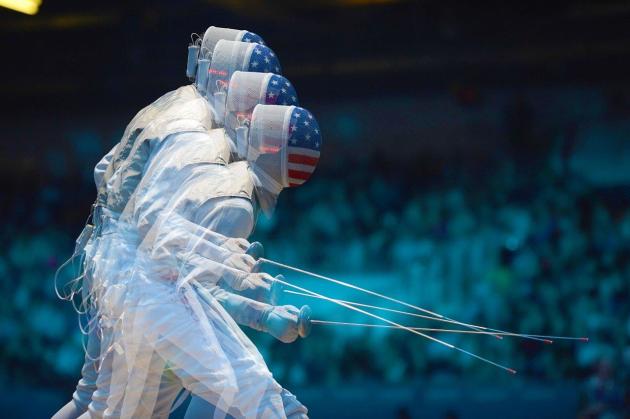One of Australia’s top freelance sports photographers, Nikon Ambassador Delly Carr's lifetime list of clients reads like a who's who of the Australian sporting scene. And the lists of global sporting events he has covered is just as impressive.
To celebrate my 8th Olympic Games commission, below are my Top 8 pieces of advice to aspiring sports photographers.
For an athlete there is no bigger defining moment in their life than the Olympic Games. For four or more years, the Games consume their life, and the scenario of body and mind competing in the Games is monotonously, but importantly, played over and over again.
A forecast of moments in which they will anticipate, react to, and live when the set day of competition arrives. These are the same moments that I must try to anticipate, react to, and live when they are presented to me.
1. ATLANTA (1996): KISS.
When thinking about backgrounds, just think KISS. Keep It Simple. You don’t need a distraction to take the viewer's attention away from the athlete or the main moments.
Compose your photo carefully. The simplest approach is usually the best in sports photography, and you have to decide what needs to be in the shot while not including anything that is a distraction. If possible, choose a plain background – in other words, neutral colors and the simplest patterns. You want the eye to be drawn to the focal point of the image, that is, the athlete, rather than a sponsor’s sign or a brightly dressed security guard.
Using an aperture of around f/2.8 or f/4 will affect the depth of field so that the backgrounds disappear into an out-of-focus blur.

2. SYDNEY (2000): Pay attention to the light.
The number one factor that has the biggest effect on how your photograph looks is the quality of light that is hitting your subject. There are two aspects of lighting that you need to pay attention to – the color of the light, and how harsh or diffused the light is.
Understand light to the point of being obsessed by it: I know I am. Have a good knowledge of how light behaves, how it will look on your final image, and how you can use it to your advantage to create your vision. Shooting good pictures means nothing without them being lit properly. Learn how you can also use bad lighting conditions to your advantage as well. Light is, and can be, your friend.

3. ATHENS (2004): Dream big. Live the dream.
I stand here after leaving my corporate job, 30 years on, and about to head for my 8th Olympic Games as a photographer. No one in this country has achieved that as a freelance photographer. Was that always a goal of mine? Yes, it was!
Spend time developing your ideas – your skill will naturally progress over time and you will start to see trends in your work. Listen to your gut instinct and learn to trust and follow that voice.

4. BEIJING (2008): Biology.
Put a little bit of yourself in each image. A good photograph has a little of your 'soul' in each image. Whether it be your mood, your thoughts, your personality, or your physical effort to get that image, that's what being creative is all about. Individuality. Take what is being presented to you and make it your own.
And that individuality is humour, is darkness, is form, and will be shaped by how I feel that day, how fatigued I am, my hunger, my hours of sleep, my life experiences, my friends, my yearning to be at home and in comfort, or how my work has progressed through the day of competition.

5. VANCOUVER (2010): Learn to love your mistakes.
Taking the ideal sport photo isn't as easy as it sounds. Every professional photographer at some stage in their career or hobby has taken some pretty bad shots, or photos that haven't turned out the way they expected. They would be lying if they said they hadn’t.
Work out what went wrong and use that as a basis to keep improving. It might simply be a creative challenge for yourself to visualise a photo in a different way, and try to capture that moment on your camera.
Remember — don't give up. Practise, practise, practise.

6. LONDON (2012): Buy the best gear you can afford.
I’m excited to be taking Nikon’s new flagship, the Nikon D5, with me to Rio where the 12 fps and high ISO (up to 3,280,000) and impressive autofocus will help me in even the most dimly lit situations. But you would also be surprised just how tall the amateur and pro-consumer cameras stand up against the top-shelf cameras. The heart and engine that drives the D5 is also present in the more affordable models.
Slowly get to learn and understand the capabilities of each camera, lens, and accessory you buy. Make them work for you to achieve the grand vision you have in your mind. Teach it to freeze the action; teach it to pan blur; teach it to be part of the creative flow. Your eyes see, your mind translates that into a reflex, your index finger presses the shutter button accordingly, and your camera will piece together a grand collection of pixels into your own photograph.

7. SOCHI (2014): Never take a vacation.
The creative never take a vacation. The creative are persistent. People understand that to become skilled at tennis or skiing you have to put in hours of practice. The same is true about sport photography.
Research the sport or athlete. Research the rules. Know your camera and its limitations. Know how light behaves. Don't wait for ideal conditions because they may never happen. Research the alternative scenarios.
Most importantly, think in images.

8. RIO (2016): Expect the unexpected - vision and reflex.
As a sports photographer, my work will constantly revolve around each one of these set moments. There will be many. But unlike the athlete, I will have little control over the biology of that moment. And so, vision and reflex becomes my key focus.
One tip here is to make sure your settings are locked while you stalk your sporting prey. I typically set my shutter speed to over 1/1000th with a shallow depth of field like f/2.8, depending on the sport.
Herein lies the essence of why I chose to be a sports photographer. My world is about moments – quick fleeting moments that are otherwise missed – but brought into existence by the physical photograph. And the moments are many, the moments are quick, and the moments all exist with different biologies to each other. The biology is determined by the vision and portrayal that the photographer judges as being part of its outer skin. The sports photographer puts a little of themselves into their grand vision, and ultimately the exhibition of that captured moment.

About Delly Carr
Delly Carr’s 30 years of ethics and signature photography has been formally recognised by his peers with his induction as a founding member of the World Photography Academy (and still the only Australian member photographer), Brand Ambassador for Subaru Australia, Butter-On-Toast Brand Ambassador, Thule Brand Ambassador, and as the Senior Director of the 101010 Sports Photography Academy.
His current work has been featured prominently in promotional campaigns for companies as diverse as the Tokyo 2020 Olympic Organising Committee, Oakley, Gatorade, Kellogg’s, Asics, Nikon, Speedo, Fox Sports, National Australia Bank, American Express, Red Bull, Vodafone, RM Williams, Sydney Olympic Park, and the Bradman Foundation.
He has been commissioned as the official photographer to Swimming Australia, Bahrain Endurance Team, Sydney Thunder, the Kellogg’s NutriGrain Surf Ironman, the NSW Men’s and Women’s Cricket Team, the Sydney Running Festival, the ITU World Championship Triathlon Series, the Rugby World Cup Organising Committee, the Australian Beach Volleyball Tour, Triathlon Australia Series, AIS, Surf Lifesaving Australia, Cycling Australia, Rowing Australia, Hockey Australia, and Canoe Kayak Australia.
He is also accredited to photograph most, if not all, of the major sporting events and competitions in the country such as the past six Commonwealth Games and the 1996, 2000, 2004, 2008, 2010, 2012, 2014 and 2016 Olympic Games. He is best known worldwide for his award winning imagery in the sport of Triathlon, and was most recently awarded the prestigious Lifetime 'Service to Sport' Award at the Triathlon Australia Celebration of Champions.











